
8 minute read
PYRENEAN TEXTURES
Texture has always been a secondary effect of other pursuits. It is further ironic that living in the Pyrenees itself was a situation derived from another goal that went sideways, where Spain materialised as an unexpected solution. I suppose a bit of background is in order to set the stage that resulted in the current story.
WORDS AND PHOTOGRAPHY GARRETT FISHER
I was raised next to my grandfather’s private airstrip in New York, near the Canadian border. He restored antique aeroplanes, generally restricted to the Piper Cub and Super Cub models, with variants in between. I spent my youth riding in his planes, eventually taking my first solo flight in the 1990s in the aeroplane I now own, a 1949 Piper Cub Special. The latter is a postwar model that sits between the iconic Cub (which trained most American pilots for WWII) and the Super Cub (which became the de facto bush plane of Alaska). My aircraft model, rare in that slightly over 1,300 were produced, can do both basic bush plane landings and ‘low and slow’ flying, for which Cubs are treasured.

PA11 in Cerdanya
The aeroplane eventually made its way from New York down to North Carolina, out to Colorado, back to the Atlantic Coast, out to Wyoming, then off to Germany and then Spain. Other than the Atlantic crossing in a shipping container, it flew to all its new homes at painstakingly slow cruise speeds of 120 km/h, with one fuel tank, requiring stops roughly every 320 km for refuelling.
While crossing America as part of many transitions, I developed a knack for aerial photography. It was unknown to me at the time that few aeroplanes are well suited for the task, as airframe parts are often in the way, requiring co-pilots, special door installations, harnesses, and much coordination to line up photographs. In the Cub, it is possible to fly the aeroplane while sticking the camera out the window, taking 18mm wide-angle photographs at the same time.

Freezing Alpine Lake - Parque Nacional Aigüestortes, Spain
Amid a growing interest in this skill set, I discovered in 2012 that an entirely different genre exists from the air: that of isolating the horizon and zooming in on unique textures and patterns below. It is a hybrid of my standard style, which is to shoot impactful landscape scenes which include the horizon, and drone photography, which often points downwards sharply, though tends to include a reasonably wide-angle. ‘Textured’ images are neither, in that the focus may be as small as a village, large farm field, or beach.
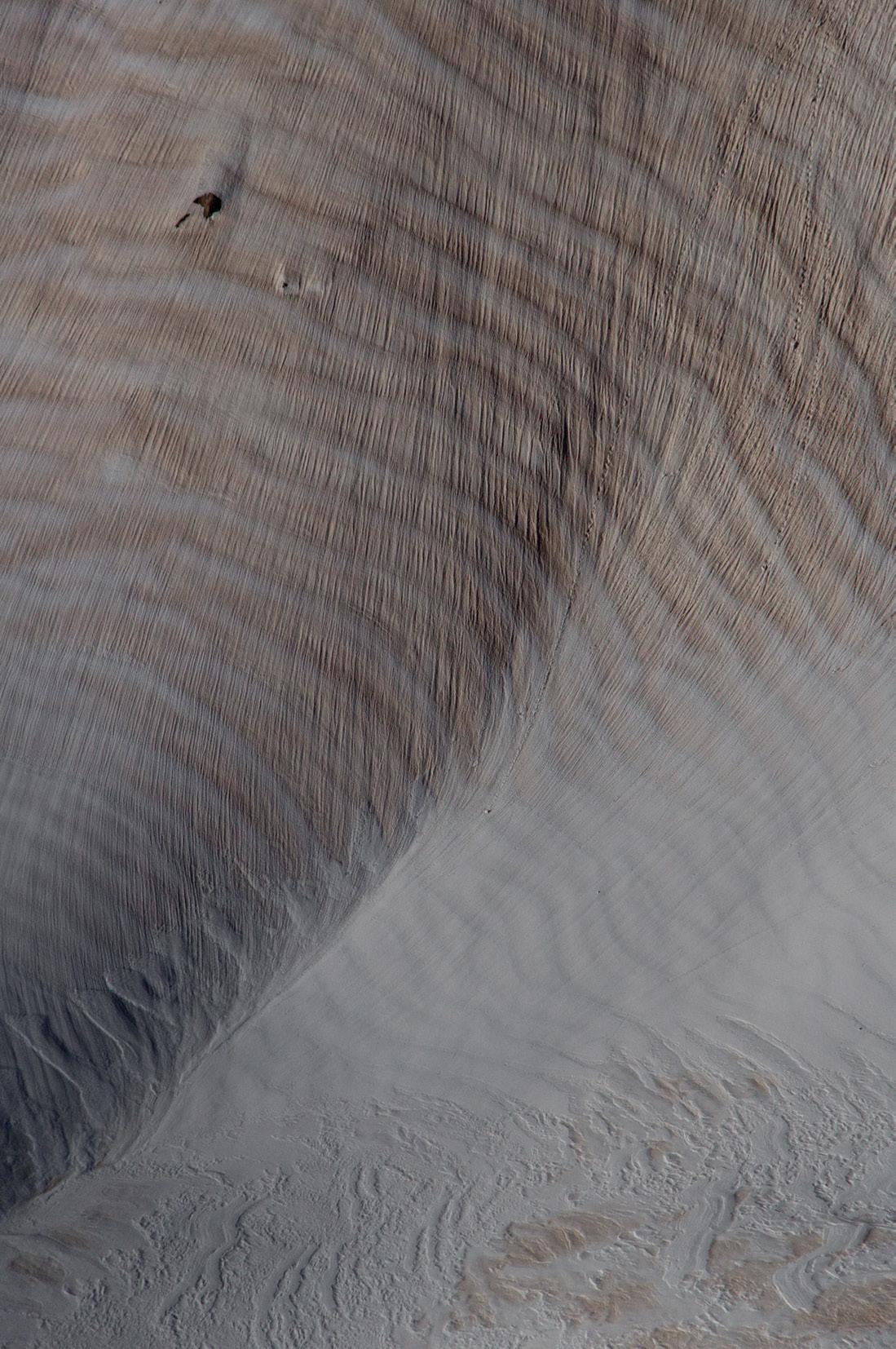
Saharan dust on snow – Central Pyrenees
I discovered this phenomenon while in an otherwise unappealing area of the foothills of western North Carolina on a grey winter afternoon. That discovery was profound enough that I began searching for agricultural texture when I could find it, gathering interesting images here and there as I crossed America. Later, in Wyoming, I would fly a large portion of the Rocky Mountains, gathering not just agricultural regalia but also naturally occurring texture forms. After my move to Europe, I wrote two books filled with photographs of this genre.
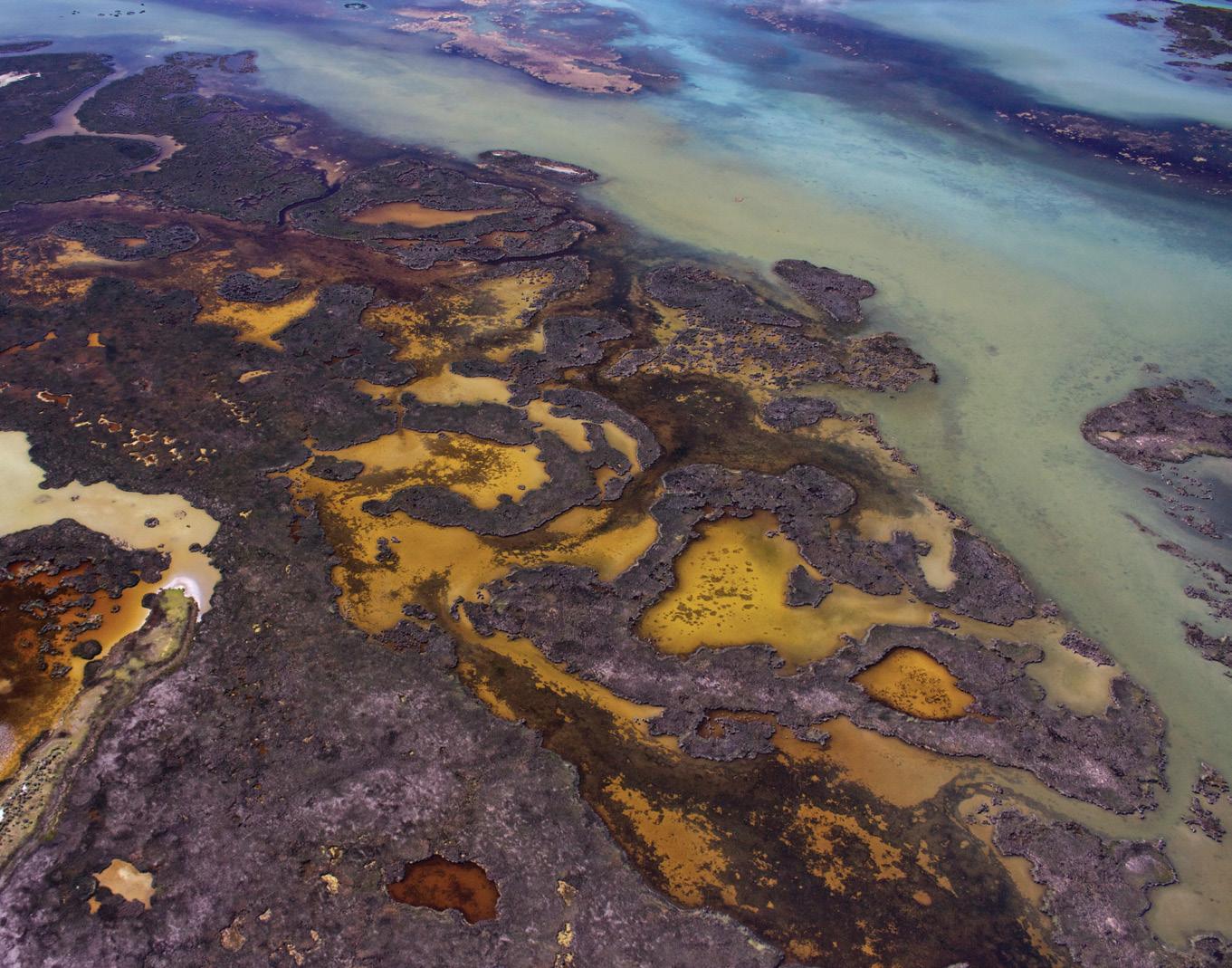
American Texture – North of Bear Lake, Idaho
As one would expect, I kept an eye out for texture in Europe and was greeted with a firehose of it. Germany, in its insistence upon Teutonic order, had a dazzling array of perfectly ordered farmland, devoid of the slightest inefficiency such as weeds. As life wandered not too long thereafter to Spain, I kept looking for agricultural texture, collecting it as I went, until that fateful day that I arrived in my new home of La Cerdanya, a profoundly attractive high-altitude valley in the Catalan Pyrenees, at the convergence of Andorra, France, and Spain.

Village of Montella in La Cerdanya
When describing what it was like to move to that section of the Pyrenees to other pilots, I find it easiest to convey the variety of the area by noting its climate zones. To the east is the driest section of continental France, with a region that features the famous Tramontane wind. To the southeast, one finds humid and wet Mediterranean weather, with abundant forests. A one-hour flight to the southwest presents the Zaragoza desert, with the Central Catalonian Depression in between, itself a strangely productive, foggy, semi-arid region. To the west, alpine terrain over the Pyrenees stretches for 130 miles. Directly north, over the spine of the mountains, continental French climate abuts the Pyrenees, resulting in distinct vegetation, a product of greater rainfall. In the middle lies the temperate semi-arid valley of La Cerdanya, with four distinct seasons, laden with deep and profound textures.
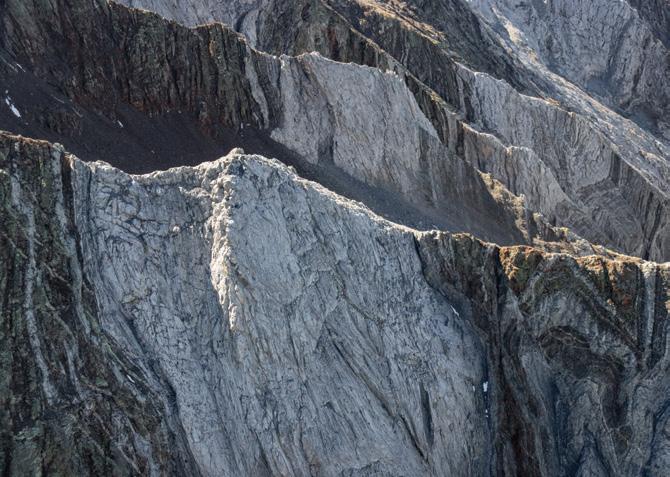
Rock layers beneath Posets, Central Spanish Pyrenees
Visitors would later proclaim that I might as well 'cut and paste' what they were seeing to an image of Wyoming, places that they had previously visited. Another thought it looked just like the mountains of Utah. As a former resident of New York, Wyoming, Colorado, and North Carolina, I could find scenery that looked like all four places within a 20-minute flight; I just needed to pick the direction and the world would change quickly.
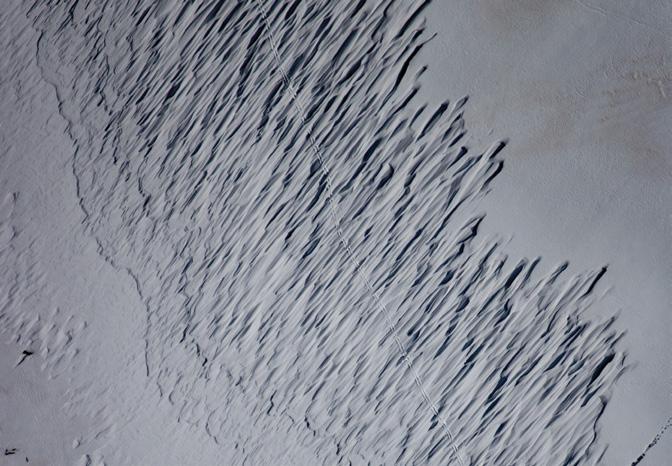
Shorn snowpack – Serra – French Pyrenees
Agriculture is a deep part of life in La Cerdanya, with traditions that span a long and rich history of empires and cultures that had dominion over the region. While trans-humanism is practised in the Pyrenees (moving cows up and down to the mountains, like the Swiss), agriculture is largely reduced to the valley floors and nearby terraced farm fields. Outside of these habitable regions, the terrain gets rocky and more challenging, which means that nature is permitted to exert her raw influence.

Melting alpine lake – Andorra
It did not take long for me to realise that I had inadvertently moved to an epicentre of natural texture, of which requires a more detailed explanation of the two forms of 'texture' one can find in the Spanish Pyrenees. With dry skies and an illustrious sunlight, I found myself taking scenic images on the ground and in the air, and friends would note the incredible 'texture', which had much to do with lighting, vegetation, and surreal Spanish scenery. That sat alongside what I have previously mentioned, which is the technique of isolating a subject, removing horizon and scale. Both subject styles existed in superlative intensity and quantity at the same time.

Poppies – La Cerdanya, Spain
While powerful scenic images are motivating, I find a curious attraction to the mystique of narrowly focused texture subjects. Realism photography is in such abundance these days and the genre has become so obvious that little artistic intrigue remains. To isolate scale furnishes a detailed, data-rich image which simultaneously remains somewhat elusive, inviting the viewer into the process to attempt to decode the subject and meaning of the photograph.

American Agricultural Texture
It is especially magnified in above timberline locations, as data within the image defies the provision of an anchor which would make sense of relative proportion. An image of the gnarled remains of an avalanche, the surface of a remaining Pyrenean glacier, exposed thrusts of layered rock, or variegated alpine tundra often have nothing in the scene to identify how big anything in the image is. Sure, a mountain scene must be grand, though is that rock the size of a dog, a person, a car, or a house?

Avalance Vall d’Aran, Spain
It is virtually impossible to divorce the majesty of the Pyrenees from the equally majestic experience of flying above them in a gentle, simple, antique aeroplane. While I often flew on pleasant, sunny days, there is a reality of Pyrenees weather that I came to understand after my arrival: it is a renowned factory of mountain waves and rotors, which are profound currents of vertically moving air as well as tubes of sometimes violent rotation, respectively. While I had made a near art out of flying the highest terrain that I could find in the Rockies in this same aeroplane, I was forced to become an even greater expert in the severity of mountain weather that I found, learning to literally surf the waves at 10,000 feet or higher.

Summer hail above timberline – Andorra
I bring this up as this world of high-altitude air is not something that solely affects pilots. The existence of abovetimberline terrain is loaded with a complexity and richness that is somewhat mystifying as to how virtually the entire world below passes by, unaware of what is happening high up in this terrain. When the wind slackens and I gently fly by with my camera out of the window, a whole world unfurls beneath in the snows of winter storms.
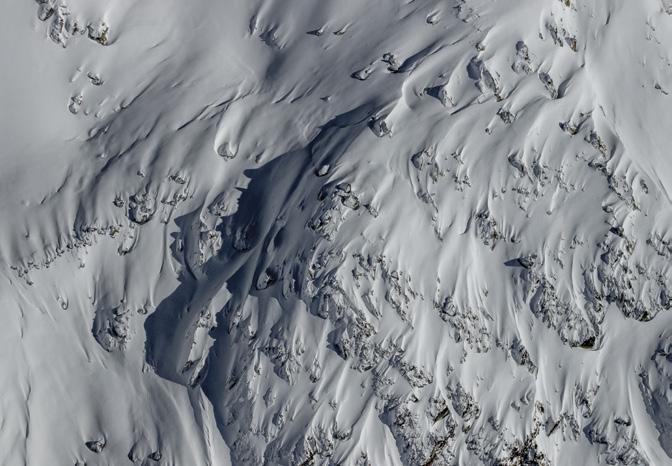
Snow drifting uphill – Parque Nacional Aigüestortes
Snow drifts are incredibly rich from above and up close, with wide variety on a stormby-storm basis. Sometimes the wind is so strong that it shears the snow off the ridges; other times it forms brilliant rime ice or snow drifts that point upward on steep terrain.
Avalanches are an incredible sign of nature’s might, usually far from civilisation. Dust from Saharan storms leaves orange-red patterns, as though the snow of the Pyrenees is trying to imitate the dunes of North Africa. As alpine lakes freeze and melt and annual snowfall initially presents itself and melts away the following summer, waves of textured beauty come and go, a world unto itself that seems to change with the passing day.
The sum of these efforts made it into my third texture work, something I did not expect until it was nearly complete. Up until that point, I could only hope to collect enough texture images to comprise an entire book by covering large expanses of earth, incidentally collecting a scene here and there. The Pyrenees was the first time that I discovered more than enough in a small area, of which I believe it surpassed what I found in America.
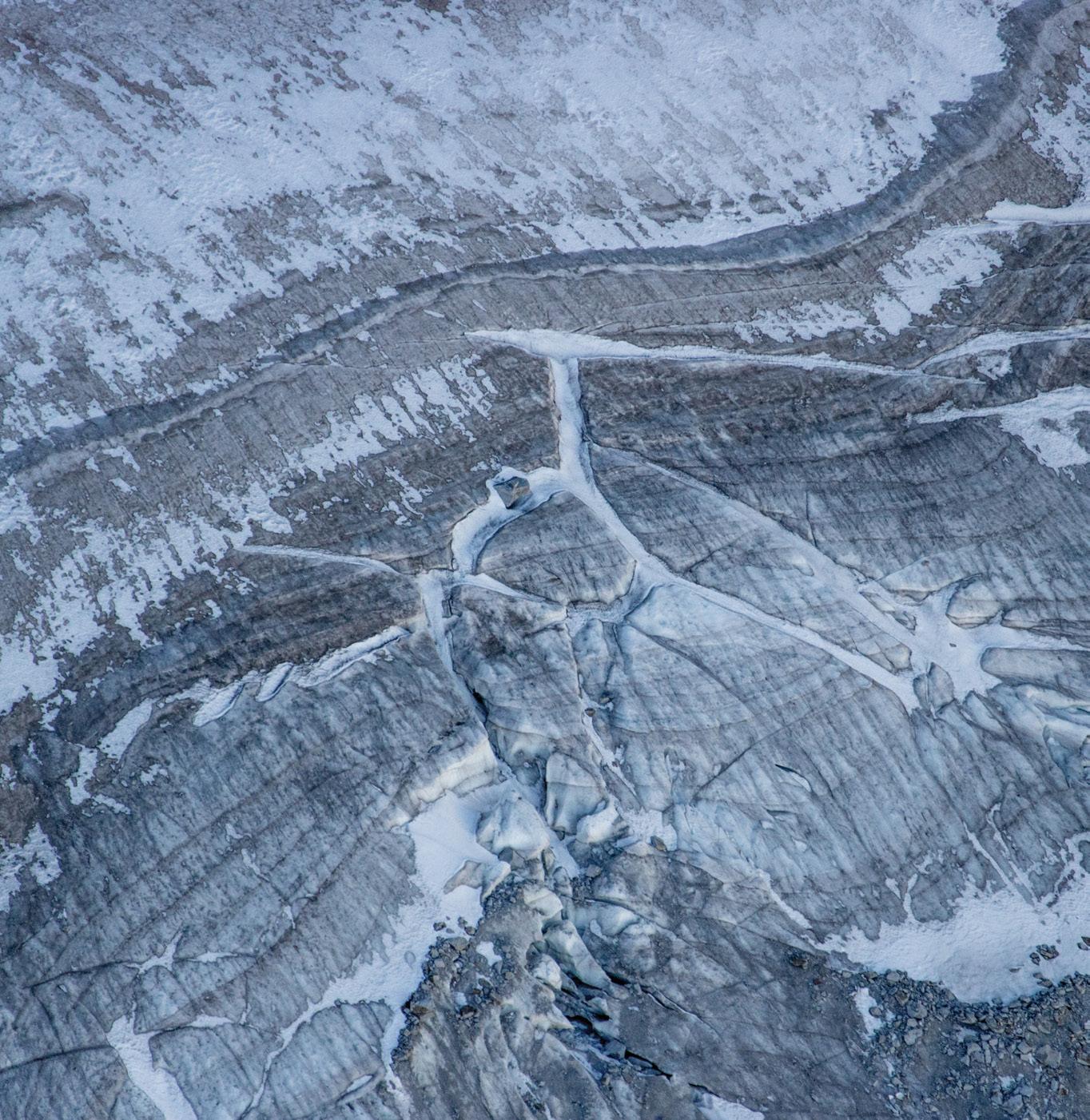
Glacier beneath Tuca de Tempestades, Spain
Mountain Texture: The Pyrenees from the Sky is available on global Amazon sites. Garrett Fisher has published 23 books, of which 19 pertain to aerial photography. He blogs regularly at www.garrettfisher.me

Embalse de Mediano, Spain










